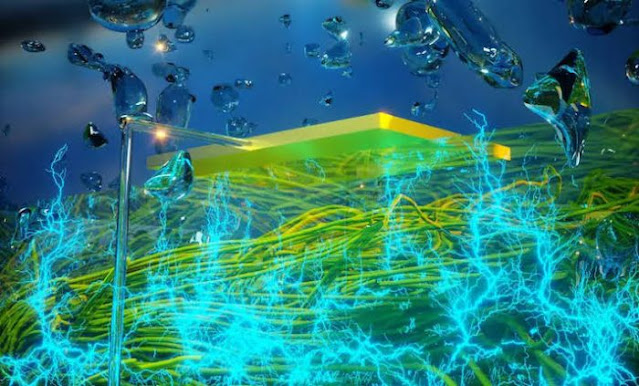In a remarkable breakthrough, engineers have showcased a method that could revolutionize the extraction of renewable energy directly from the atmosphere. The technology, named the “generic Air-gen effect,” capitalizes on materials featuring nanopores smaller than 100 nanometers in diameter. Although not yet ready for practical use, this innovation holds the promise of overcoming limitations observed in existing energy harvesters.
Led by engineer Xiaomeng Liu at the University of Massachusetts Amherst, the research team has identified that almost any material can be employed to create a device capable of continuously harvesting energy from humid air. The key requirement is the presence of nanopores, which are minute cavities with diameters around a thousandth of a human hair’s width.
The “generic Air-gen effect” functions by harnessing the electricity generated by microscopic water droplets present in humid air. Engineer Jun Yao highlights the analogy to natural clouds, where water droplets contain charges that, under the right conditions, can produce lightning. The researchers aim to create a human-built, small-scale cloud that predictably and continuously produces harvestable electricity.
Previously, the team developed an air energy harvester relying on protein nanowires produced by the bacterium Geobacter sulfurreducens. However, the latest breakthrough reveals that the bacterium is not a necessity. The generic Air-gen effect is, as Yao explains, a universal capability that any material possessing the required nanopores can exhibit.
The generic Air-gen device is constructed from a
thin film of materials such as cellulose, silk protein, or graphene oxide.
Water molecules easily enter the nanopores, moving from the top to the bottom
of the film. As they travel, collisions with the sides of the pores generate a
charge in the material, resulting in an imbalance between the two sides similar
to the charge dynamics observed in lightning-producing clouds.
 |
| Artist’s impression of an Air-gen device. (Derek Lovley/Ella Maru Studio) |
Despite being in the early stages, the cellulose
film tested demonstrated a spontaneous voltage output of 260 millivolts in the
ambient environment. Although insufficient for powering devices like mobile
phones, the researchers anticipate scaling up the technology by stacking thin
films. Additionally, the adaptability of different materials opens the door to
creating harvesters tailored for specific environments, such as rainforests or
arid regions.
The research, published in Advanced Materials, marks a significant stride towards clean electricity generation from the atmosphere. Liu expresses excitement about the wide-ranging possibilities, emphasizing that the breakthrough is opening doors for harvesting clean electricity from thin air. Further testing in diverse environments and efforts to scale up the devices are the next crucial steps in bringing this transformative technology to practical applications.





0 Comments